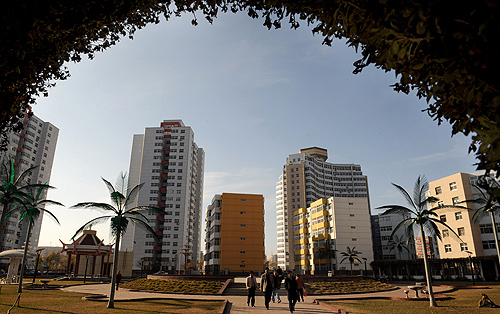|
 |
|
THE BIG SWITCH: Daliuta of Shenmu County, Shaanxi Province, a small village with only a dozen households 20 years ago, has now grown into a modern town (TAO MING) | China will see a new urbanization upswing in the future, according to the Blue Book of Cities in China released by the Urban Development and Environment Research Center under the Chinese Academy of Social Sciences (CASS) on June 15.
According to the blue book, China has 118 megalopolises of more than 1 million people, and 39 super metropolises such as Beijing, Shanghai and Shenyang with more than 2 million residents.
China's urban population surged to 607 million with an urbanization rate of 45.7 percent at the end of 2008, an increase of 148 million since 2000, which makes the urban population almost level with the rural population in the world's most populous nation, the blue book said.
As the main representative of China's national economy, cities play a key role in promoting economic and social development, said Chen Jiagui, Vice President of CASS, at the blue book release ceremony.
Since last year, the sweeping global financial crisis has posed grim challenges for urban development, namely, declining urban income growth, failing businesses, increasing unemployment and migrant workers returning home.
In 2008, newly created job vacancies in urban areas decreased by 1.8 million, the first sharp drop since 2001, said Shan Jingjing, deputy editor-in-chief of the blue book, at the ceremony.
The unemployment situation is exacerbated by China's huge labor pool, with 15 million new job hunters each year and some 6 million college graduates this summer, Shan said.
In 2008, urban per-capita disposable income increased by 2,000 yuan ($294) year on year, but its growth rate slowed down significantly by 3.8 percentage points, according to Shan.
The impact of the global financial crisis has not changed the fundamental development tendency of China's economy and the urban economy will accelerate its transition and upgrading, said the blue book.
|
